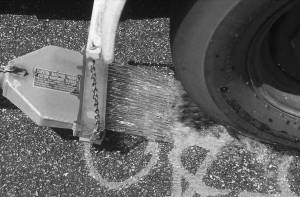Project 0-1707
Review of TxDOT WWARP Aggregate Classification System
Abstract
This report documents the findings from a research study that reviewed TxDOT's Wet Weather Skid.
Accident Reduction Program's (WWARP's) aggregate classification system. It evaluated various lab test procedures that are used in the classification of aggregates as well as the field skid resistance performance of 27 different aggregate sources that belonged to synthetic, sandstone, igneous, gravel and carbonate categories. The findings showed that hard, durable aggregates characterized by >80% AIR or <8% MD losses, provided excellent to very good skid resistance regardless of the aggregate residual polish value. In general, all test methods evaluated showed better capability in separating excellent/very good quality aggregates than in identifying very poor/poor quality aggregates.In other words, the special limitation in these test methods was found to be in their ability to classify border line aggregates into satisfactory and unsatisfactory categories. The WWARP aggregate classification system based on Residual PV, MSS loss and AIR proved to be effective in separating Excellent/Very Good (Class A) from Good/Fair(Class B) materials. However, this classification system failed to separate the few aggregate sources with poor field performance from those with good/fair performance.

Project PI: Priyantha W. Jayawickrama
Project Co-PI: Pavan Madhira
Center for Multidisciplinary Research in Transportation (TechMRT)
-
Address
Texas Tech University, Box 41023, Lubbock, TX 79409-1023 -
Phone
806.742.3523 -
Email
techmrt.outreach@ttu.edu
